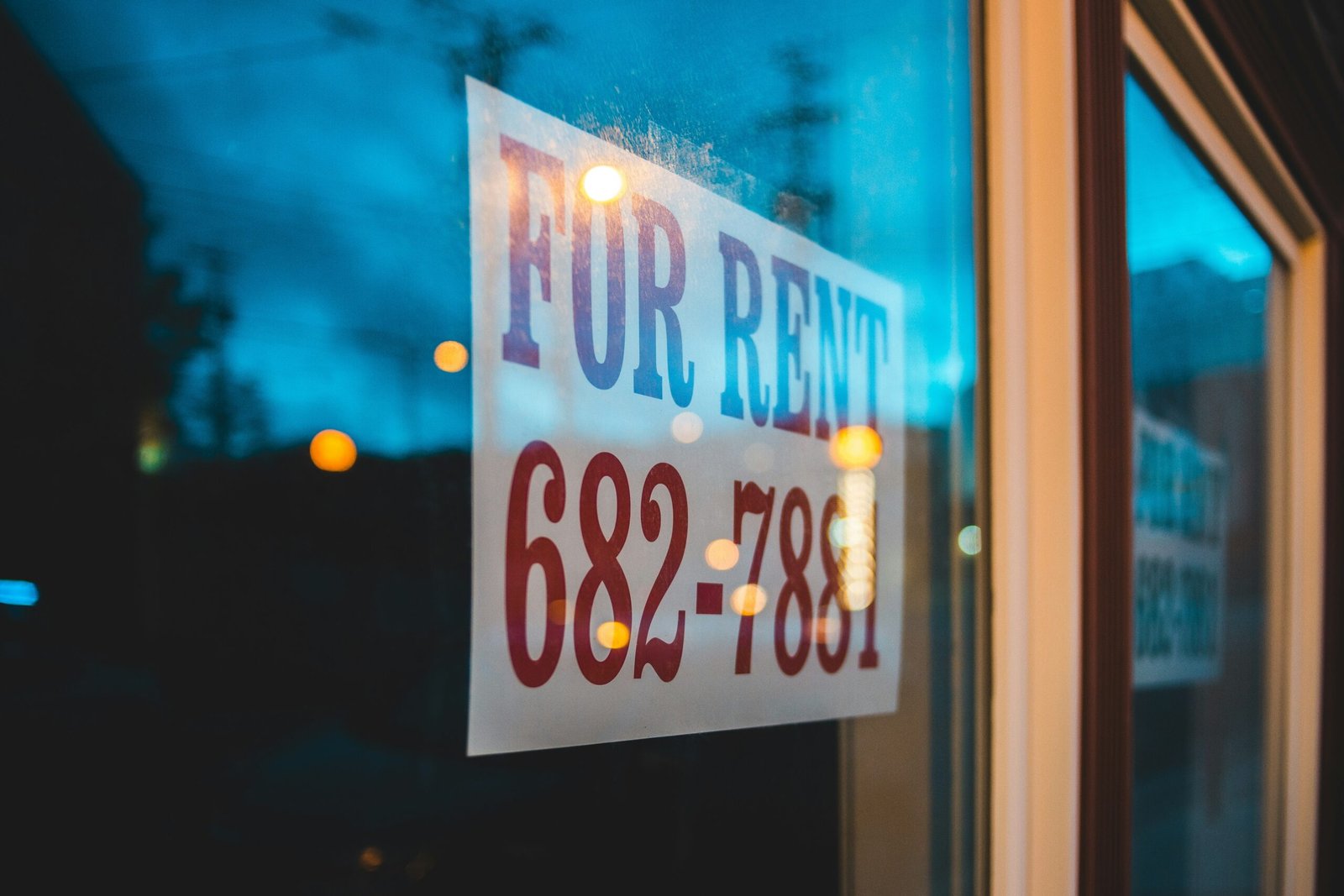Table of Contents
Introduction to Cash Flow
Cash flow, particularly in the context of real estate cash flow, is a fundamental concept in real estate investing that refers to the net amount of liquid cash generated by a property after all operating expenses and financial obligations have been deducted. This metric serves as a vital indicator of a property’s financial performance and its ability to generate profit. It encompasses all cash inflows and outflows and is crucial for property investors to understand, as it determines the sustainability of their investments.
For property investors, effective real estate cash flow management can mean the difference between a successful venture and a financial burden. Positive cash flow indicates that a property is earning more money than it is spending, providing investors with the opportunity to reinvest, cover unexpected costs, or distribute profits. Conversely, negative cash flow suggests that expenses exceed income, leading to potential financial strain and risk of foreclosure if not addressed promptly.
In essence, grasping the intricacies of real estate cash flow is essential for anyone venturing into the real estate market. It impacts profitability, investment strategy, and overall financial health. Equipping oneself with this knowledge not only fosters better investment decisions but also helps mitigate risks in an ever-evolving market environment.
The Importance of Cash Flow in Real Estate Investments
In the realm of real estate investment, understanding real estate cash flow is paramount. Cash flow refers to the net amount of cash being transferred in and out of a property over a specific period, representing the property’s income potential. A positive cash flow indicates that the incoming revenue from property rentals exceeds the outgoing expenses, allowing investors to cover operational costs, improve the property, and reinvest in future opportunities. Conversely, negative cash flow occurs when expenses surpass income, potentially jeopardizing the investment and eroding the investor’s financial stability.
Monitoring cash flow is essential for making informed investment decisions. It enables investors to assess the property’s performance effectively and strategize accordingly. For instance, a detailed cash flow analysis can uncover trends in rental income, maintenance costs, and vacancy rates, providing insights that allow investors to react proactively. By understanding cash flow patterns, investors can identify when a property is underperforming and take appropriate measures, such as adjusting rental prices or implementing cost-cutting strategies.
Moreover, sustaining properties over time requires strong cash flow management. Adequate cash flow ensures that investors can cover necessary expenses such as property taxes, insurance, and maintenance, ultimately supporting the property’s longevity and structural integrity. This financial resilience attracts potential buyers or investors and enhances overall property value.
In essence, understanding cash flow is critical for achieving financial stability in real estate investments. Effective cash flow management contributes to long-term success by not only enabling investors to maintain their properties but also providing them with the necessary capital to explore additional investment opportunities. Therefore, investors must prioritize cash flow analysis as a central component of their real estate investment strategy.
Components of Cash Flow in Real Estate
Cash flow in real estate is a crucial concept that can significantly influence an investor’s success. Understanding the core components that contribute to cash flow can help investors make informed decisions. The primary components of cash flow include rental income, operating expenses, property management fees, and financing costs.
Rental income represents the revenue generated from leasing the property to tenants. This is the most visible aspect of cash flow and is often the primary motivation for purchasing a rental property. The total rental income will fluctuate based on market demand, property location, and the specific rental agreements in place. Efficiently managing rental agreements can optimize cash flow, ensuring sustained income over time.
Operating expenses encompass all the costs associated with maintaining the property. These expenses might include property taxes, insurance, utilities, maintenance, and repairs. Keeping a vigilant eye on these costs is essential, as they can quickly erode potential cash flow if not carefully managed. By conducting regular assessments of the operating expenses, investors can identify opportunities to reduce costs and improve overall cash flow.
Property management fees are another essential component of cash flow. If an investor chooses to hire a property management company, these fees will directly impact the cash flow generated from the property. While these fees can represent a significant ongoing expense, they also relieve the investor of the day-to-day responsibilities of managing tenants, maintenance, and other operational challenges. It is vital to weigh the benefits of hiring property management against the potential impact on cash flow.
Finally, financing costs, including mortgage payments and interest rates, play a significant role in determining net cash flow. Understanding the terms of the financing arrangements and how they relate to rental income will allow investors to project their cash flow more accurately. By carefully analyzing the components of cash flow, individuals can create a more comprehensive understanding of their investment’s financial health.
Calculating Cash Flow: A Step-by-Step Guide
Calculating cash flow is a fundamental skill for anyone interested in real estate investing. Understanding how to determine cash flow allows investors to assess the potential profitability of a property. The cash flow formula is relatively straightforward and involves a few key components.
The basic formula for calculating cash flow is:
Cash Flow = Total Income – Total Expenses
To break this down further, total income generally refers to the rental income generated from the property along with any additional income sources, such as parking fees or laundry services. On the other hand, total expenses encompass all costs associated with owning and managing the property including mortgage payments, property taxes, insurance, maintenance fees, and management fees.
For example, let’s consider a rental property with the following financials:
- Monthly rental income: $2,000
- Monthly mortgage payment: $1,200
- Property taxes: $300
- Insurance: $100
- Maintenance and management fees: $200
First, calculate the total income per month, which is $2,000. Next, add together all the monthly expenses:
$1,200 (mortgage) + $300 (property taxes) + $100 (insurance) + $200 (maintenance and management) = $1,800
Now we apply the cash flow formula:
Cash Flow = $2,000 (Total Income) – $1,800 (Total Expenses) = $200
This results in a positive cash flow of $200 per month. This scenario illustrates the importance of calculating cash flow accurately to ensure that the investment generates revenue beyond the operational costs. Understanding cash flow is essential for sound financial decision-making in real estate ventures.
Positive vs. Negative Cash Flow: What’s the Difference?
Cash flow is a critical component of real estate investment that determines the financial health and viability of a property. Understanding the difference between positive and negative cash flow is essential for any investor. Positive cash flow occurs when the income generated by a property exceeds the expenses required to maintain it. For instance, if rental income from a residential unit is $2,000 per month and the total expenses, including mortgage payments, taxes, and maintenance, amount to $1,500, the property generates a positive cash flow of $500 each month. Such a scenario enhances an investor’s financial situation, allowing them to reinvest, save, or use the surplus to cover unexpected costs. Furthermore, positive cash flow can improve an investor’s borrowing capacity, making it easier to secure financing for additional property acquisitions.
On the other hand, negative cash flow occurs when the expenses surpass the income generated by the investment. For example, if the same property generates $1,500 in rental income while its monthly expenses total $2,000, the result would be a negative cash flow of $500. This situation can place financial strain on the investor, necessitating additional personal funds to cover the shortfall. Continuous negative cash flow may lead to a depletion of savings, force the sale of the property, or eventually result in foreclosure if the investor is unable to meet the financial obligations. It is critical for investors to carefully analyze their properties and potential rental markets to mitigate the risk of negative cash flow.
Overall, the distinction between positive and negative cash flow has significant implications for real estate investors. A thorough understanding enables informed decision-making, ensuring that investors prioritizing positive cash flow can build and sustain a successful property portfolio.
Strategies to Improve Cash Flow
For real estate investors seeking to enhance their cash flow, several key strategies warrant consideration. Each of these methods can contribute to generating a positive cash flow and ultimately ensure the financial viability of property investments. Implementing these strategies effectively requires a combination of market understanding, financial management, and strategic planning.
One of the most straightforward approaches to improving cash flow is increasing rental rates. Landlords should conduct regular assessments of the local rental market to ensure that their properties are competitively priced. Factors such as property location, amenities, and market demand influence rental values. Incremental and reasonable adjustments to rents can result in a substantial increase in cash inflow, provided they align with market trends and do not exceed tenant capacity.
Another effective strategy involves reducing expenses, which can significantly enhance cash flow. Investors should meticulously review operating costs, including maintenance, property management fees, and utility expenses. By negotiating with service providers, implementing energy-efficient upgrades, and performing preventative maintenance, property owners can decrease overhead costs. These reductions directly influence cash flow, allowing more capital to be funneled back into the investment.
Optimizing financing options is also crucial for improving cash flow. Investors should explore refinancing opportunities, particularly during periods of low interest rates, which can reduce monthly mortgage payments. Additionally, utilizing investment strategies such as leveraging equity from existing properties for new purchases can lead to greater profitability. Careful evaluation of these financing strategies can yield a more favorable cash flow scenario.
In conclusion, real estate investors can enhance their cash flow through a combination of increasing rents, decreasing expenses, and optimizing financing options. By adopting these strategies, investors can improve the financial performance of their properties and create sustainable cash flow, vital for the ongoing health of their investment portfolios.
Common Mistakes in Cash Flow Management
Effective cash flow management is pivotal in real estate, yet many beginners often fall into common pitfalls that can hinder their financial success. One prevalent mistake is failing to analyze and project cash flow accurately. New investors may underestimate expenses associated with property ownership, such as maintenance, repairs, and management fees. This oversight can lead to an inflated perception of potential income, ultimately causing financial strain when actual cash flow does not meet expectations.
Another significant error involves neglecting to maintain an emergency fund. Unexpected expenses, such as emergency repairs or periods of vacancy, can severely impact cash flow. Beginners should establish a reserve fund to cover such contingencies, ensuring they are not forced to dip into their regular cash flow or sell assets during challenging times. Establishing a budget that factors in these uncertainties will enhance stability and promote sustainable cash flow management.
Additionally, some investors may become overly reliant on rental income without diversifying their income streams. By focusing solely on one property or market segment, they expose themselves to greater risk. Investors should consider diversifying their portfolios by investing in different types of properties or exploring alternative income opportunities, such as short-term rentals, to bolster overall cash flow.
Another common mistake is failing to account for the time value of money when evaluating property investments. Beginners might overlook how inflation and other economic factors can affect cash flow over time, leading them to make poor investment choices. Understanding the dynamic nature of money and its influence on long-term cash flow is crucial for informed decision-making.
In conclusion, avoiding these common mistakes is essential for successful cash flow management in real estate. By analyzing projections meticulously, maintaining reserve funds, diversifying income sources, and considering the time value of money, beginners can ensure a healthier financial future in property ownership.
Real Estate Cash Flow vs. Standard Business Cash Flow
Understanding the differences between real estate cash flow and standard business cash flow is essential for both new and seasoned investors. Cash flow in the realm of real estate typically involves the income generated from rental payments, sales, or property appreciation. In contrast, the cash flow of a standard business encompasses revenues from goods or services sold, expenses incurred, and the resulting profits or losses.
One of the unique aspects of real estate cash flow is its relative volatility compared to conventional business cash flow. In standard businesses, cash inflows can be more consistent due to constant demand for services or products. However, real estate cash flow can be subject to seasonal fluctuations based on rental demand, local market trends, and economic conditions. For instance, in regions where tourism significantly affects rental prices, cash flow can spike in peak seasons and decline during off-peak months, presenting challenges in cash flow management.
Additionally, while standard businesses often have predictable income streams, real estate investments may experience varying degrees of unpredictability. Factors including property location, tenant turnover, and maintenance costs can significantly impact overall cash flow. For example, unexpected maintenance expenses can decrease the profitability of an investment property, disrupting its cash flow for a period.
Furthermore, unlike traditional businesses that may have multiple income streams, the cash flow from real estate is generally linked to individual properties. This singular focus necessitates more thorough forecasting and preparation for potential vacancies or market changes. Investors must develop strategies to stabilize their cash flow, such as building a diversified portfolio of properties or ensuring sufficient reserves to manage periodic cash shortfalls effectively.
In conclusion, a comprehensive understanding of the unique characteristics of real estate cash flow, in comparison to standard business cash flow, equips investors with the knowledge needed for effective cash flow management and investment success.
Conclusion: The Role of Cash Flow in Real Estate Success
Cash flow is a critical component of real estate investments that directly influences long-term success. Throughout this guide, we have explored various aspects of cash flow, emphasizing its significance in evaluating properties and making informed investment decisions. Understanding how cash flow works allows investors to gauge the profitability of their real estate ventures, ensuring that they can cover expenses, reinvest in properties, and achieve financial stability.
Real estate investments are not solely about the acquisition of properties; they also involve ongoing financial management and a commitment to maintaining positive cash flow. This financial metric provides valuable insights into the operational efficiency of an investment. A property that generates consistent cash flow can be more appealing to investors, as it signifies a reliable income stream and the potential for growth. Conversely, negative cash flow can indicate underlying issues that may lead to financial distress.
In evaluating properties, investors must prioritize cash flow analysis to determine viability. Key aspects to consider include rental income, operating expenses, and potential capital appreciation. By performing thorough calculations and projections, investors can identify properties that align with their financial goals. Furthermore, regular monitoring of cash flow allows investors to adapt their strategies in response to market changes and tenant needs.
Therefore, it is essential for both novice and experienced investors to develop a strong understanding of cash flow dynamics. The ability to analyze and optimize cash flow can ultimately lead to enhanced investment performance and increased returns. As the real estate landscape continues to evolve, prioritizing cash flow management will remain a cornerstone of effective investment strategy, propelling investors toward sustained success.


